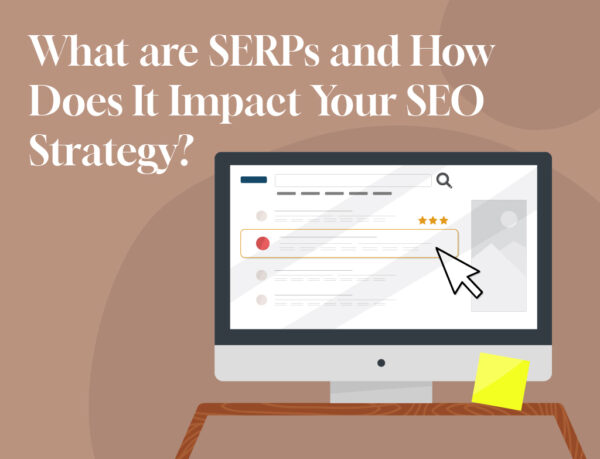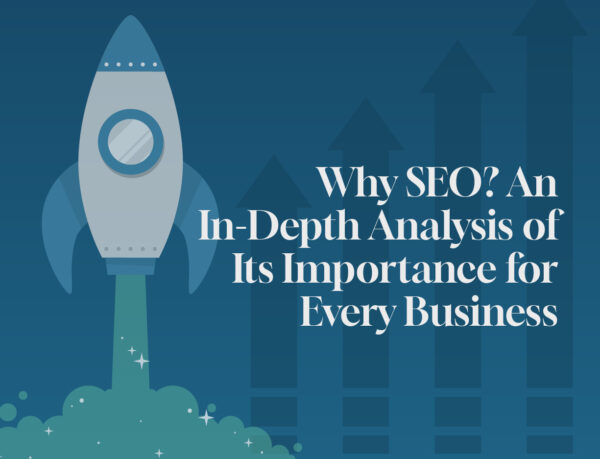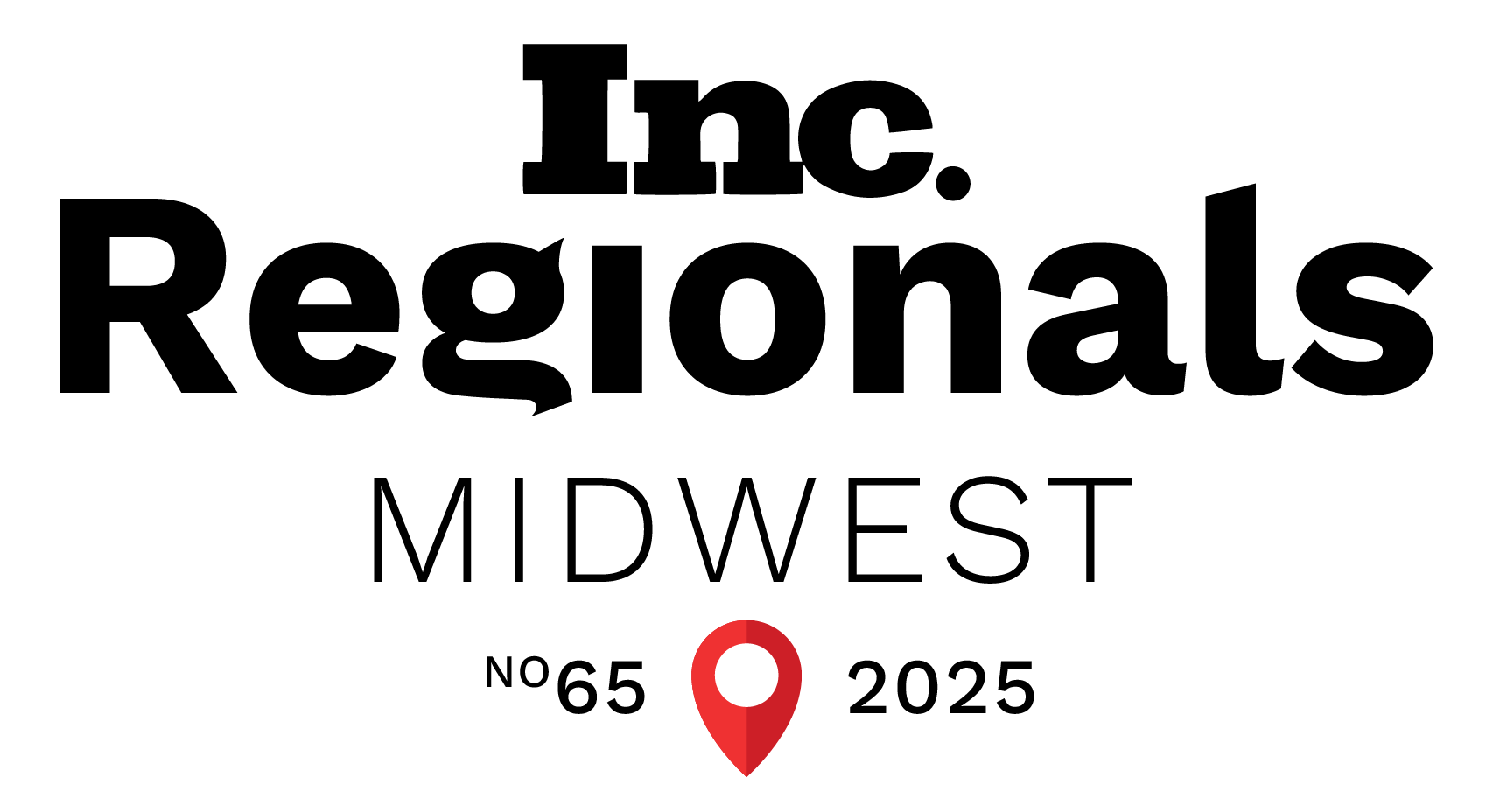Here’s What You Need to Know About Metaverse Advertising

In This Article
“You can kind of think about this as an embodied internet that you’re inside of rather than just looking at. We believe that this is going to be the successor to the mobile internet.”
—Mark Zuckerberg, CEO Meta
Metaverse seems to be the shiny new thing everyone is talking about. Facebook changed to Meta in late 2021, and now metaverse revenue projections expect to reach upwards of 1,607.12 billion USD by 2030. For more information about Meta, check out its metaverse keynote chapters here.
With such tremendous projected growth, the metaverse has caught the attention of digital marketers who want to get their fair share of metaverse space. But before we get into the details of metaverse advertising for your company, we’ll start by covering the very foundation of what metaverse actually is.
What Is Metaverse?
Metaverse is a virtual reality space where people and assets join together in an online community. Although this sentence encompasses the basis of the metaverse, the space itself is quite nuanced.
Like the internet, this shared virtual reality is constantly growing with every new industry, company, and person who joins. Because of this constant expansion, the metaverse has undefined boundaries.
Visually speaking, metaverse is a world where individuals can interact with each other using virtual reality (VR) and augmented reality (AR) devices. Using these devices—which are most commonly seen in the form of headsets—someone in Los Angeles can have an entire buyer experience with a store in Miami in real time, including interacting with store products and employees, if that store so chooses. The metaverse is a three-dimensional space in which inhabitants can collect objects, such as shoes, clothing, etc. to nurture relationships.
Here’s the basis of what we understand metaverse to be: A combination of reality mixed with technology that allows participants to make every day, impactful decisions that can happen inside of a platform.
The most surreal part of the metaverse—at least in our humble opinion—is that it acts almost as a video game experience, except it has benefits and consequences that impact life both inside and outside of the metaverse. You might even say, “It’s quite meta.”
A Note on Defining Metaverse
“The metaverse” is not just what Facebook is turning into. Rather, it’s a concept that combines multiple platforms that can all interact with each other.
You can collect an object from “one metaverse” and keep it with you in a “different metaverse,” allowing the digital space to live up to its name as a meta universe. If this feels more like sci-fi than real life, you aren’t alone. Just hang on tight while we explain how your marketing can impact the metaverse, and vice versa.
A Marketer’s Role in the Metaverse
Since the metaverse mixes reality with technology, it presents an entirely new approach to marketing.
People can literally interact with businesses in the metaverse. Instead of viewing an advertisement, a person—or, a person in their metaverse role—can interact with the advertisement.
Now let’s not jump ahead. You don’t need to create your own interactive metaverse ads for all of your customers to share a game or a virtual drink with…not yet, anyway. However, because the metaverse has these undefined constraints and opportunities for what metaverse actually is and can do, there are new metaverse advertising opportunities that haven’t even been invented yet.
So, what is your role as a marketer? Honestly, your role as a metaverse marketer is to be open to being strategically creative in your advertisements, consumer relationships, and technological investments to accommodate the up-and-coming marketing platform that is metaverse.
Is Metaverse Marketing New?
Metaverse is picking up speed in the social and business world. Since metaverse is new, all aspects of marketing in the metaverse are also new. However, the idea of marketing in social digital spaces is not new at all, at least not relative to this new era of technology.
The idea of “in-game” advertisements first came about in the 1970s with the game developer Adventureland, whose advertisement for their new game—Pirate Adventure—appeared as a text block next to the title.
As graphics in video games advanced, partnerships with advertisers became even more accessible. One of the most notable and trailblazing advertisements was in 1983, when Budweiser showed up in the arcade game Tapper. The hype only grew from there.
In fact, the gaming company Entertainment Arts (EA) has been pursuing digital advertising opportunities with other business for years. EA produces competitive gaming partnerships like FIFA, NBA Live, and Madden NFL. They are also the producers of games like Sims 4 and Plants vs. Zombies.
When President Obama ran for office in 2008, he had a billboard placed in Need For Speed: Carbon. And his 2012 reelection campaign ran ads in Madden NFL 13.
The video game experience—and lifestyle—may have started with Pong, but it has come a long way from there, growing to seamlessly—although not always gracefully—integrate advertisements.
So as surreal as metaverse seems—and trust us, we get how bizarre the concept is—the crossover of business, politics, and personal life is far from an original metaverse conception.
Metaverse Advertising: Is it Going to Be Like Regular Digital Advertising?
Before we jump to this question, let’s examine “advertising” a bit more. If you are reading this, you probably understand how important digital marketing is to the growth and success of your business.
The definition of digital marketing is:
The intentional effort of producing and implementing marketing strategies used on electronic devices. Your efforts can be measured using technology to see results, create a strategy, and reach a business goal.
When you break down digital marketing into the foundational purpose of its existence, then yes, metaverse advertising will inherently be digital marketing.
But nothing is ever so black and white. Metaverse advertising is a new era of marketing. So, while it can fall under the umbrella term of digital marketing, the data, tools, and confines of advertising in the metaverse is part of a completely different game.
Since metaverse is a new technology, your advertisements will need to adapt to the evolving tech world that is metaverse.
Wrapping Your Head Around Metaverse Marketing
If this seems like a big pill to swallow, don’t worry. Take a deep breath and know that we are all in this together. And remember, you’ve done this before! It’s true, you have—when you began your journey with social media marketing.
Although social media and metaverse share similarities and have their (major) differences, we’re not talking about metaverse as social media. Rather, think of approaching metaverse ads as you did with social media marketing.
In this age of digital marketing, social media marketing is a fairly new process. You have and are currently working on finding your voice on social media. Social media networks bring a new, more intimate style of communication and advertising, opening up opportunities and connections that you did not have before these platforms existed.
Metaverse advertising should function similarly. You adapted to the changing field of social media advertising. You will adapt to the evolving field of metaverse advertising.
Of course, it’s always nice to get help from experts, so reach out to the team here at Metric Marketing for extra support during this expansion into what we now call metaverse. And, of course, we are always here to help with social media marketing services, too.
For more information about social media practices you should know, visit our blog.
Back to the Basics: A Metaverse Ad Comparison
Although metaverse closely aligns with social media, it also shares extreme attributes of other virtual realities, such as video games. Just as virtual marketing isn’t new, already developed video game theory can also be used as a tool to begin to understand the metaverse.
The Sims, Call of Duty, Fallout, Among Us, and countless other games share many similarities with the metaverse. These are spaces where a user can make a profile that matches the game’s platform, and play the game while interacting with other people playing the same game in another part of the world.
That being said, the idea of metaverse as a virtual reality is not a new concept. It’s simply become more common to see “everyday” people participating rather than just people who are considered “true” gamers.
Even in some of these games, advertisers have partnered with the gaming companies to place ads. The biggest difference will be that advertisers and businesses now have greater flexibility to do more in the metaverse than just placing a single ad.
You now have the freedom to be a participant, and your customers can participate with you. Metaverse combines in-shop experiences with VR. Pushing the limits seems to be the metaverse way.
Why Metaverse Advertising Works Differently Than Other Video Game Ads: Economy and Crypto
Although there are similarities with video game ads, the metaverse and advertisers will interact differently because of the metaverse economy. Metaverse is now open to new digital exchanges, specifically when handling NFTs (non-fungible tokens) and cryptocurrency.
There are definitely skeptics, but many buyers are confident that their investments aren’t for naught. If you are unfamiliar with the term—and you’re certainly not alone—NFTs are one-of-a kind data. They are non-interchangeable units that can be sold and traded. Examples include digital files like pictures and audio clips that belong to the buyer and that buyer only. Pretty wild, huh?
In addition to digital money that affects “real world” economies, space in the metaverse will also have a price. Investors are using “real money” to purchase virtual land, or at least digital space made of pixels. Looking at The Sandbox map, you’ll see plots of land for sale and logos of already purchased space. This is real, believe it or not.
It’s a market in and of itself, with a real functioning economy and land that both parallels and influences life outside of the metaverse—that is, everyday life here on Earth, not on Earth 2. Yet soon enough, the differences between the two could be harder to decipher.
Taking Marketing to the Next Level With Metaverse Advertising
Metaverse marketing is all about expanding the possibilities. The main thing to understand about metaverse advertising is that it parallels reality.
Metaverse is not just a space in which to place advertisements as you would on a social media platform or on top of a search engine results page (SERP) with PPC advertising (pay-per-click advertising).
Heck, even social media ad stories differ from metaverse, and they involve social interaction. Instead, metaverse is a space of interaction and immersive experiences.
An important component of metaverse advertising is collaboration. You may not have the technology to transfer your marketing efforts to VR. That’s okay, because other companies do. Metaverse provides the unique opportunity to collaborate with brands and businesses you may not have thought of before. Let’s take a look at how this can work.
Metaverse Advertising Examples
Roblox is a huge player in the VR world. In fact, Roblox has its own version of a metaverse. Since Roblox is both a company and a platform, it allows other brands into its metaverse to get a taste of VR advertising.
Through its partnerships, it’s pretty clear that Roblox is preparing for a new era of metaverse and virtual reality lifestyles. Rapper Lil Nas X put on a virtual concert in Roblox. And Warner Bros. collaborated with Roblox to make a virtual setting for its film In the Heights. These virtual spaces make it possible for people to experience real world settings and situations from the comfort of their homes.
And yes, there’s money to be made in the metaverse. Lots of it. According to a 2021 report, Roblox brought in $454.1 billion in quarterly revenue. VR advertising is becoming less about ads and more about creating user experiences.
Another example of broader metaverse advertising is the Gucci garden virtual tour, where participants can explore the Gucci Garden. Gucci also sold rare Gucci items on Roblox for the iconic fashion brand’s 100th birthday. The Gucci Roblox bags were more expensive than the real life celebratory bags…enough said.
Here are a few more examples:
- Coca-Cola’s NFT
- Concerts on Animal Crossing
- Hyundai’s Roblox mobile adventure
- Wendy’s Twitch account advertises its “fresh, never frozen beef”—their character is now active in Fortnite’s Food Fight mode and the fast food company received recognition from the Cannes Lions International Festival of Creativity for this
- Balenciaga’s Fortnite clothing—or “skin,” if you will
This list just skims the surface of how companies are integrating within virtual worlds. We hope this list provides some insight into how active the metaverse really is.
VR Headsets: A Medium of Metaverse Marketing
Although VR headsets are nothing new, they are becoming increasingly more popular. Metaverse participation with VR headsets will continue to gain in popularity, so creating metaverse advertising that will work on these devices will also gain in popularity.
Using VR headsets allows for a completely new experience, as well as new opportunities for advertisers to explore a metaverse full of potential, including the opportunity for 360 marketing campaigns.
Despite the growing popularity of VR headsets, accessibility can still be an issue. We will talk more about this as a challenge later in the article
Metaverse Advertising Opportunities
The companies mentioned above are big name brands that have influence in the metaverse. So, how do you make an impact in the metaverse? Let’s go over some metaverse advertising opportunities to implement in your future digital marketing plans… or, if you’re ready, you can start working on them now!
Go Old School
As we discussed above, the metaverse parallels the real world, which means that advertising and marketing theory still applies in the metaverse, it’s just that the techniques become more digital as they adapt to metaverse technology.
So what do we mean by go old school? We mean it’s time to get back to the basics of advertising before this new era of digital marketing began:
- Billboards
- Sporting events
- Posters
- Branded items customers can sell and collect
All of the “original” advertising techniques have a place in the metaverse. Many traditional ways of promoting your brand made it difficult to track metrics or key performance indicators (KPIs). Because, as you’ve probably realized, it’s hard to know who really is seeing that highway billboard and do they really need your services.
But the metaverse space is so new that going back to the basics of traditional advertising is a great way to get your foot in the door of this virtual world.
Imagine someone walking around the metaverse or sitting in a virtual business meeting, and your logo is simply there in the background. Pretty cool, if you ask us.
Immersive Experiences
Immersive experiences are one of the cornerstones of the metaverse. The entire point is to interact in a virtual space—with the key word here being interact.
Using VR and/or AR technology to create immersive experiences for your customers—and to engage with them—brings a new allure to an already intriguing world.
You can achieve this by collaborating with brands in Roblox, Fortnite, and other virtual world platforms. You can create a whole virtual store and let customers browse, all in the metaverse. Host special events where people can watch concerts or be in social settings through your company.
Most importantly, creating an immersive experience gives your audience the opportunity to interact with your products. Like in an online store, they’ll eventually be able to buy the products they are virtually interacting with.
Make Collectables
Offer limited edition items that your customers can only have in the metaverse. In this way, you can promote your brand and engage with popular metaverse tropes.
You can even get creative with this, like Pokémon Go does, requiring people to go to specific locations to catch each character. Of course, that was the entire premise of Pokémon Go, a very successful enterprise that made $5 billion in the last five years.
Product Placement
Metaverse product placement combines traditional marketing with immersive experiences. It can be as simple as putting billboards in the metaverse, or it can be more intricate, like creating clothing with your brand on it that characters and avatars can use.
Collaborations
Collaboration is likely inevitable simply because of the novelty of metaverse. It’s probably in your favor to work with a metaverse expert like Roblox, Fortnite, Axie Infinity, ComplexLand, Sandbox, etc.. Collaboration can also get you more visibility on the platforms in charge of promoting your ad.
Influencers
Working with influencers has a whole new meaning in the metaverse. Not only can you collaborate with businesses and people to promote your products/ads, but there will now be metaverse characters who you can work with as influencers.
In fact, if you get really big in the metaverse, you may be able to create your own brand ambassadors. The possibilities of working with influencers within the metaverse are seemingly limitless.
Get Creative
Since there are really no standards or limits in the metaverse due to its constantly evolving nature, now is your chance to let your creative juices flow. Create metaverse ads that really push the limits of what you believe advertising to be capable of.
Marketing in the metaverse means exploring a whole new side of digital marketing. Embrace the chance to think outside the box with your metaverse advertising.
The Challenges of Metaverse Marketing Right Now
Just as with any new technology, there will be trial and error as the metaverse evolves. Because of this, there may also be a certain level of trial and error with metaverse marketing.
Below, you’ll see that we’ve compiled a list of potential roadblocks and contributing questions that you may find yourself asking as you develop your metaverse advertising strategy.
- Lack of data: The metaverse is relatively new and continues to expand. Traversing new digital frontiers will result in a whole lot of learning and the potential for mistakes. History repeats itself; Rome wasn’t built in a day and neither will VR interactions with customers. The lack of data—or, in some cases, an overabundance of data—can be a challenge when you first enter the metaverse. No one really knows how small businesses will operate in the metaverse because it is still fairly new. But as more and more businesses begin advertising or working with metaverse advertising agencies, the more good data we will all have.
- Data privacy risks: Security in the metaverse seems to come with a big question mark. Like any new technology, the metaverse needs adapted security measures. These data privacy measures will present their own new worlds to explore, and many don’t even exist yet. So data privacy does remain a risk.
- Who are your customers: You will still need to ask yourself who you are advertising to. Who are your target customers in the metaverse? Are they the same as your target customers on other platforms, like social media? Is your target audience different from their metaverse avatars? These are just some of the questions you should be considering when designing a metaverse ad.
- Metaverse products vs. real life products: We have said before that offering collectables is usually to your benefit when advertising in the metaverse. However, are you using the metaverse to promote these collectables or virtual products, or to promote your real products? What happens if the metaverse products outshine your “real world” business?
- Accessibility: The best way to experience the metaverse is through VR and AR. So if this is the case, how accessible is the metaverse now, and will it affect your digital marketing plan?
These potential hurdles and questions are not meant to scare you away from metaverse advertising. In fact, we are asking ourselves the very same questions!
Instead, take these challenges and find ways to overcome them, because the metaverse is also full of exciting opportunities for your business and your marketing strategy.
Contact Digital Marketing Agency Metric Marketing Today
While the metaverse marketing is still underutilized, there are many other channels that still work for your business. Contact Metric Marketing today for a discovery call.
Must-read articles
Looking for something else?
There's so much more
Ready to Inquire?














